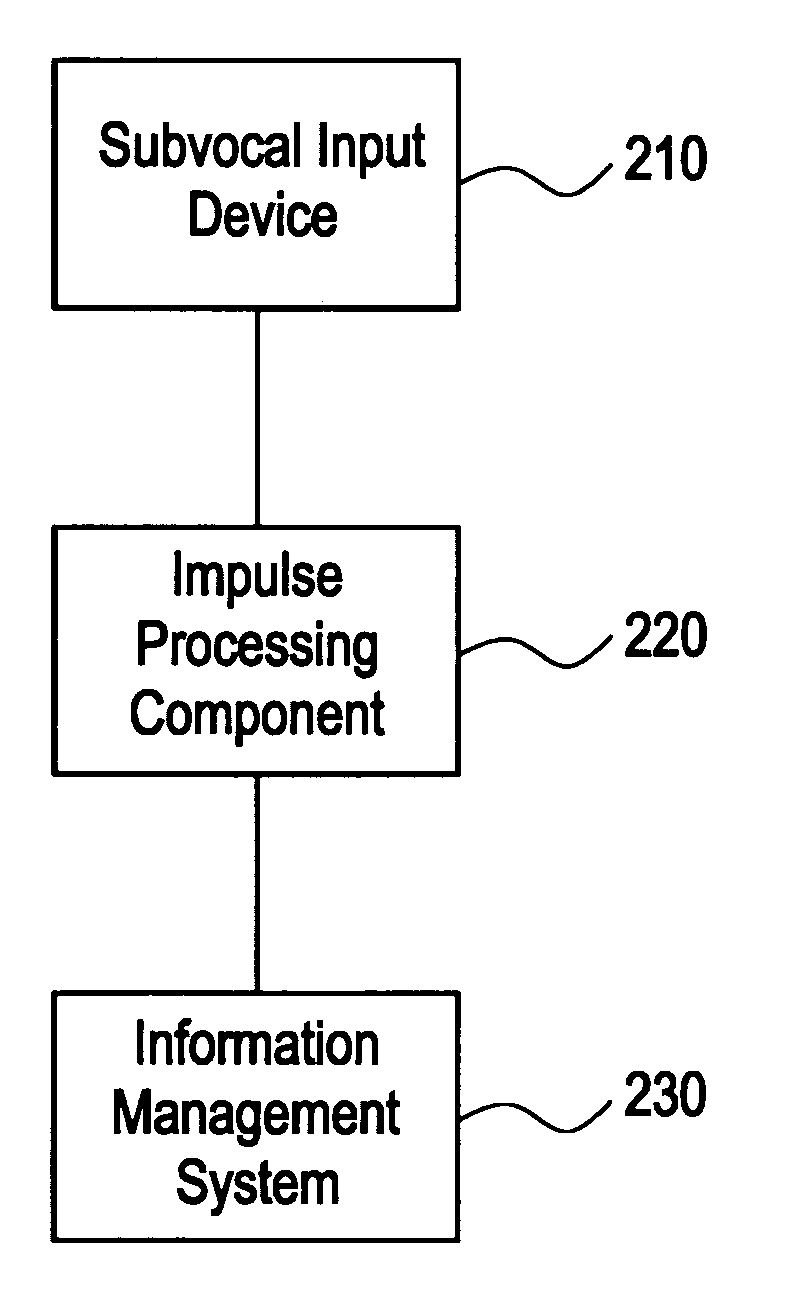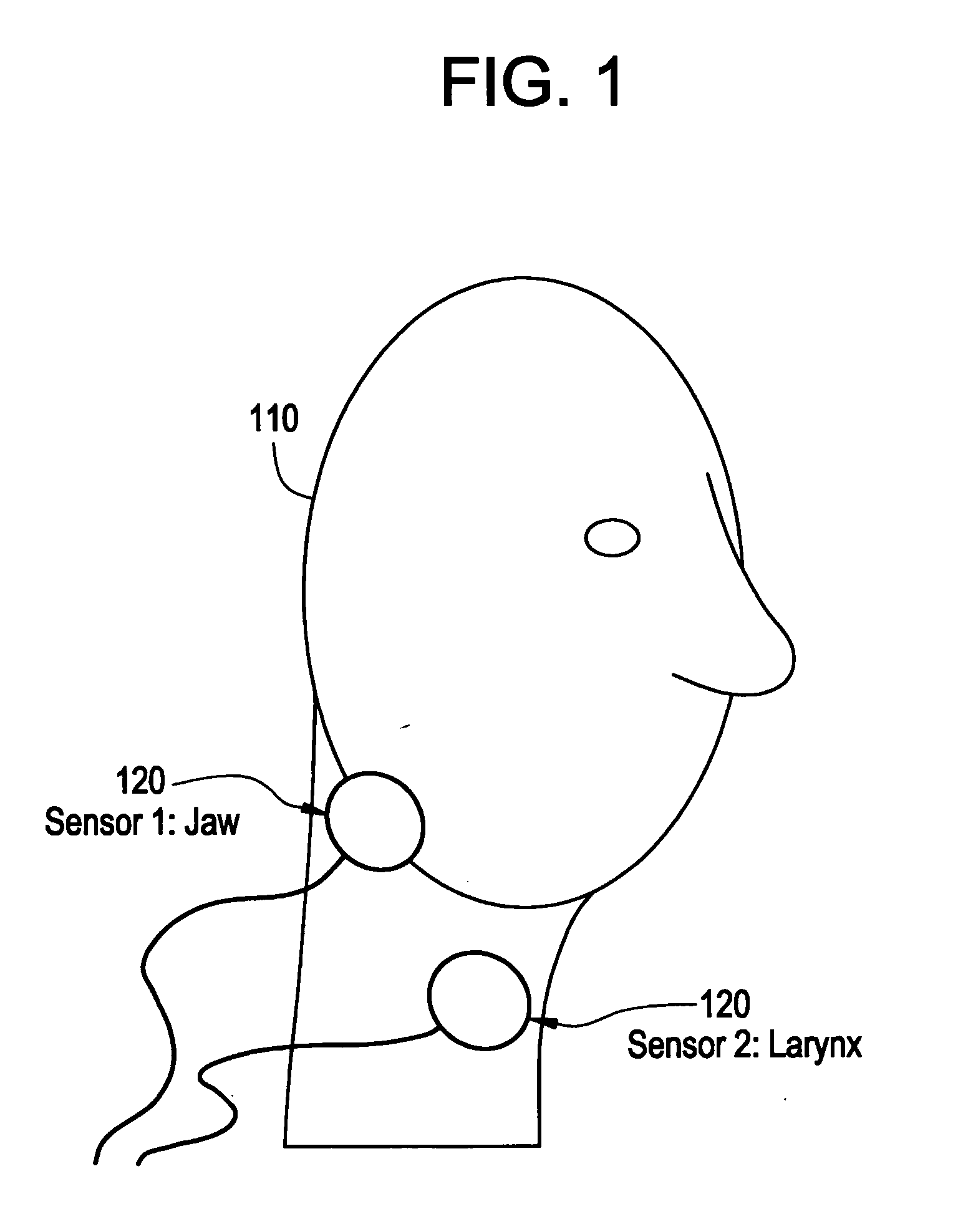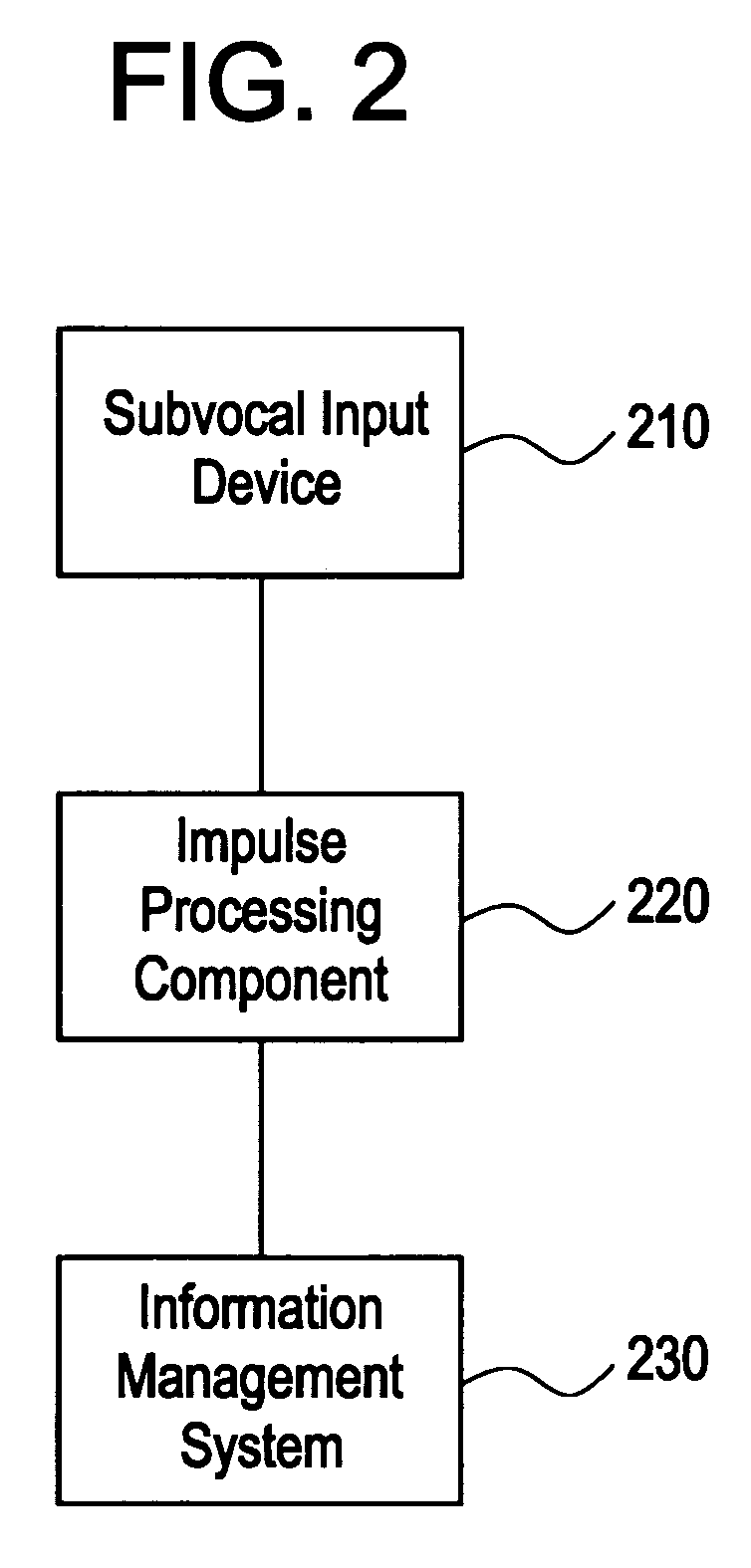System and method for subvocal interactions in radiology dictation and UI commands
- Summary
- Abstract
- Description
- Claims
- Application Information
AI Technical Summary
Benefits of technology
Problems solved by technology
Method used
Image
Examples
Embodiment Construction
[0027]FIG. 1 illustrates a subvocal input apparatus 100 used in accordance with an embodiment of the present invention. The subvocal input apparatus 100 includes one or more sensors 120. The sensors 120 may be positioned on or near a user 110. For example, the sensors 120 may be placed on or near the jaw, tongue, throat, and / or larynx of a user 110. The sensors 120 may be electrodes. The sensors 120 may be at least one of contact sensors, dry sensors, wireless sensors, and / or capacitive sensors. The subvocal input apparatus 100 may include a processing component (not shown). The sensors 120 may be in communication with the processing component.
[0028] The sensors 120 may be capable of detecting or sensing nerve impulses in the user 110. For example, the sensors 120 may detect nerve impulses from a user's subvocal speech. The sensors 120 may be capable of generating nerve signal data. Nerve signal data may represent the sensed nerve impulses. Nerve signal data may be based at least i...
PUM
 Login to View More
Login to View More Abstract
Description
Claims
Application Information
 Login to View More
Login to View More - R&D
- Intellectual Property
- Life Sciences
- Materials
- Tech Scout
- Unparalleled Data Quality
- Higher Quality Content
- 60% Fewer Hallucinations
Browse by: Latest US Patents, China's latest patents, Technical Efficacy Thesaurus, Application Domain, Technology Topic, Popular Technical Reports.
© 2025 PatSnap. All rights reserved.Legal|Privacy policy|Modern Slavery Act Transparency Statement|Sitemap|About US| Contact US: help@patsnap.com



